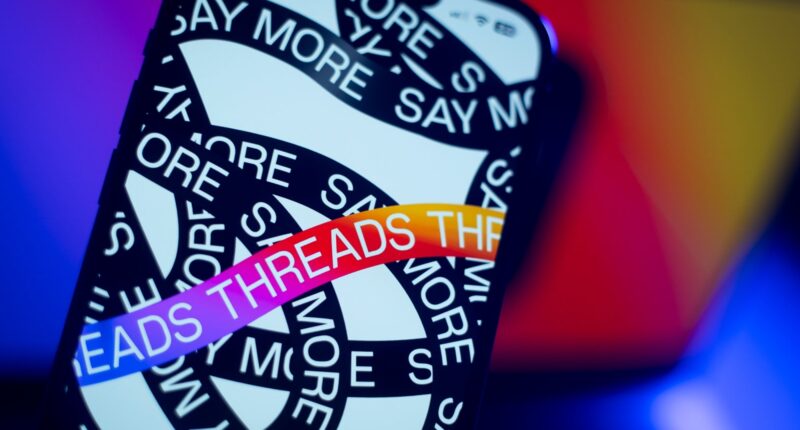
Opinions expressed by Entrepreneur contributors are their own.
In November 2022, Adam Mosseri, Head of Instagram, received a late-night call from Mark Zuckerberg, CEO of Meta (Instagram’s parent company), while on a family vacation in Italy to discuss a plan to build the “Twitter-killer.”
A month after Elon Musk’s tumultuous $44 billion acquisition of Twitter, Mosseri found himself speaking softly to avoid waking his sleeping wife as he, Zuckerberg, and a few other Meta executives discussed Twitter-like features they could add to Instagram until Zuckerberg said that he had a different idea: “What if we went bigger?”
On late July 5, 2023, Meta launched a new app called Threads, a standalone Twitter competitor based on Instagram’s account system. Within 2 hours of its launch, Threads had two million downloads, and within five days of its launch, the Twitter (now referred to as X) competitor soared to more than 100 million users. It took Twitter 17 years to reach 368 million active users.
What is the Threads app? Here’s the description according to Meta:
- Threads is a new app built by the Instagram team for sharing text updates and joining public conversations.
- You log in using your Instagram account, and posts can be up to 500 characters long and include links, photos and videos up to 5 minutes in length.
- We’re working to soon make Threads compatible with the open, interoperable social networks that we believe can shape the future of the internet.
Why can Threads be seen as a more attractive alternative to Twitter?
- Twitter is more toxic than Threads — Users have reported a friendlier atmosphere.
- Twitter has an inferior verification system.
- Twitter users want better options — a recent study has found that 25% of current Twitter users are expected to leave within a year.
However, after becoming one of the fastest-growing apps ever, Threads lost over half its 100 million users just ten days after its launch.
What seems to be missing on and with Threads?
- Chronological feed.
- Search functionality.
- Trending hashtags.
- Direct messages.
But perhaps even more importantly, Threads has had a pretty underwhelming product launch from a marketing standpoint. What’s made Twitter exciting for the past 17 years was seeing and hearing the blue bird logo with “follow me @twitterhandle” on every TV, news show, radio or podcast, resulting in billions of impressions and traffic to the site.
Outside of the generic press release by Meta, there’s not been much marketing or advertising done to promote the launch of the new social media platform. While I’m hopeful that Threads will find creative ways to attract and retain users, let’s explore four social media companies that failed due to unsuccessful launches.
1. Google+: Circles that never fully connected
In June 2011, Google launched Google+ with high hopes of competing with Facebook. The platform introduced the “Circles” concept, allowing users to group their connections into different categories. However, Google+ failed to resonate with users primarily because it was introduced as an invitation-only service.
This exclusivity created a perception that it was not easily accessible, and users didn’t find a strong incentive to switch from established platforms like Facebook. Google+ struggled to find its identity and eventually shut down in 2019.
Lesson: Accessibility is key. Social media platforms must be open and easy to join to attract a broad user base.
Related: How to Make Your Social Media Channels More Accessible to Everyone
2. Friendster: First but not the last
Friendster was one of the earliest social media platforms, launched in 2002. It allowed users to connect with friends, play games and share content. However, its launch was plagued with technical glitches and server issues, leading to frequent downtime. As competition from other platforms emerged, Friendster’s slow response to user feedback and inability to handle its growing user base resulted in a rapid decline in popularity. It eventually closed down in 2011.
Lesson: Reliability and scalability are crucial for any social media platform to thrive.
3. Vine: A six-second wonder
Vine, a short-form video hosting service, gained popularity with its six-second looping videos. Basically TikTok before TikTok. However, despite its initial success, Vine failed to capitalize on its unique format and lacked effective monetization strategies. Additionally, when Instagram and other platforms introduced similar video features, Vine faced tough competition. Twitter, which acquired Vine in 2012, eventually shut down the service in 2017.
Lesson: Innovation alone isn’t enough; sustainable monetization plans are essential for long-term success.
4. Ello: The ad-free promise that fell flat
Ello gained attention in 2014 for its promise of being an ad-free social network, catering to users’ growing concerns about data privacy and intrusive advertising. However, its launch was marred by severe technical issues, limiting users’ ability to invite friends and connect with others. Moreover, Ello struggled to maintain user interest due to its limited features and lack of engaging content. As a result, it failed to build a critical mass of active users and gradually faded away.
Lesson: Deliver on promises and provide compelling features and content to retain users.
Social media platforms’ history is filled with success stories and cautionary tales. The platforms mentioned above serve as reminders that a strong launch is critical to establishing a user base and gaining momentum. Accessibility, reliability, scalability, innovation and sustainable monetization strategies are key to achieving social media success.
This article is from Entrepreneur.com







